|
| It has become clear that the Richmond Main Post Office will be sold and the “retail” services relocated to McVittie Annex unless the City of Richmond can negotiate a deal with the United States Postal Service (USPS) to both purchase the building and provide free space for the retail services operation for the next 50 years. It turns out that the USPS has a requirement to attempt to negotiate sales with public agencies before simply selling to the highest bidder.
Unfortunately, the USPS appears to have all the leverage in this negotiation.
In the days of redevelopment agencies, such a deal would not be so much of a stretch for the City of Richmond, but today it is a steep slope. A letter from the USPS dated September 13, 2017, constitutes the offer to sell by the USPS. In summary, the offer includes:
- Sales price of $2,020,000, all cash.
- Acceptance of the offer by October 16, 2017
- City funding a $25,000 escrow
- City providing retail space of 1,576 net square feet for a period of 50 years at zero rent, with the City providing all utilities, maintenance and custodial costs
- City paying for any required remodeling to accommodate shared tenants
- City is prohibited from reselling the property for a profit
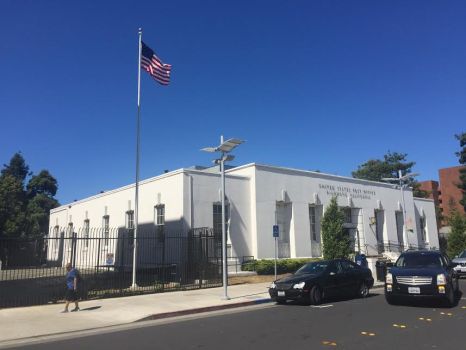
Figure 1 - Richmond Main Post Office
The current use of the Richmond Main Post Office is limited to retail with a counter accommodating 4-5 clerks and 1,200 boxes, of which only 711 are rented.
The building is on two levels, each with 7,950 square feet, for a total of 15,900 square feet. The basement level is below grade with limited natural light from light wells. The Main Post Office building was built in 1939 and is reinforced concrete, including the floors and roof. It appears to be structurally sound. It was used to handle carrier distribution, but that has all moved to McVittie, along with bulk mail. According to the USPS, the McVittie Annex has enough space to accommodate the retail operation, with boxes scaled down 854.
Richmond has five post offices: Point Richmond, San Pablo, Mira Vista, McVittie and Main. The first three are leased and, according to the USPS, right-sized. The two others are owned by USPS.
The Main Post Office building was built in 1939 and has been found eligible for the National Register of Historic Places. The PRISM Survey Report stated that the Post Office appeared to be eligible for individual listing on the National Register http://www.ci.richmond.ca.us/documentcenter/view/7083. The site is also identified as part of the recently adopted Macdonald Avenue Historic District adopted as part of the Zoning Update by the City Council in November 2016.
The only way the City of Richmond could find the money to purchase the Main Post Office would be to use money from its already insufficient reserves. Once purchased, the City presumably could lease out the balance of 5,400 square feet (net the retail operation) on the main floor and 8,000 square feet in the basement to amortize the purchase price. Both would need significant additional expenditures to make them tenant ready. At an average rental of $1.00 per square foot per month, the space theoretically could bring in $160,800 annually, less, costs for maintenance, insurance, etc. It would take a long time to put this money back into the reserves.
Aside from the money issues, there are two really good reasons for keeping the Main Post Office operation at its present location:
- Downtown Richmond is finally experiencing somewhat of a renaissance, and the prestige and convenience of the Main Post Office is an important symbolic anchor.
- McVittie Annex is in an obscure location, hard to reach from public transportation, and is frankly, a terribly ugly and foreboding building.
We have less than a month to make a decision on this, and I am soliciting the public’s help. Some things that might make this possible include:
- Commitments from prospective tenants to lease significant amounts of space.
- Suggestions for sources of the purchase money from other than the City’s reserves.
- Win the Lottery.
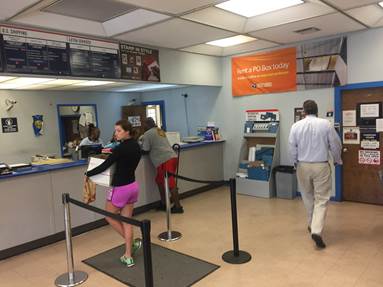
Figure 2 - Lobby of Retail Operation
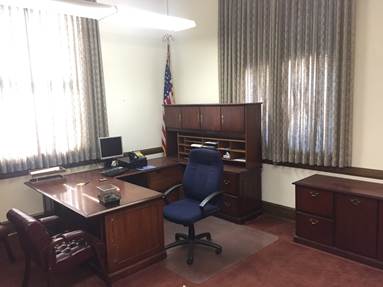
Figure 3 - Former Postmaster's Office
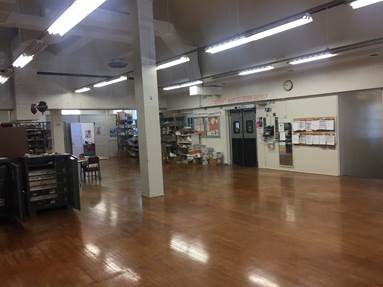
Figure 4 - Unused Main Floor Areas
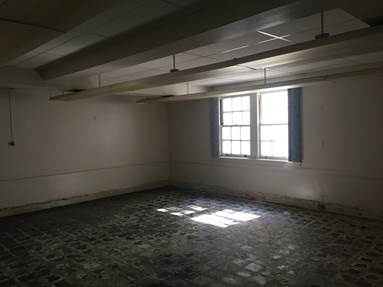
Figure 5 - Typical Basement Room
|

